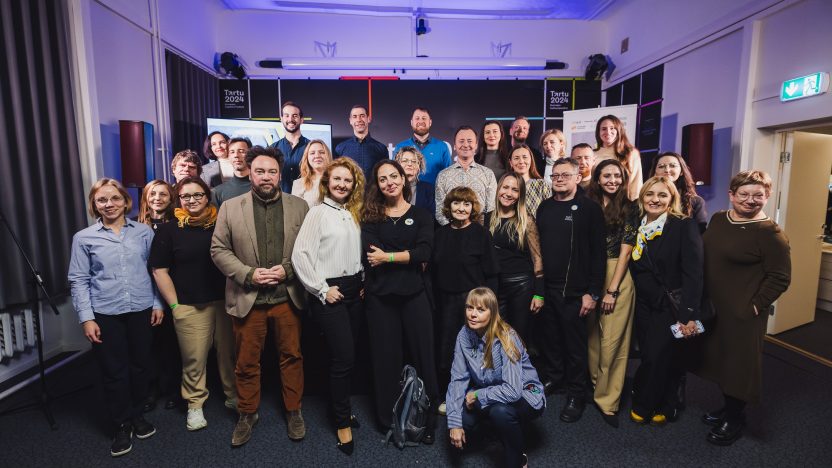Ukrainian Days UKRAINE! UNMUTED. Discussions about culture in different European countries in the face of modern challenges, presentations of essays about Ukraine, and the web platform of the Ukrainian Slice art project brought together Estonians and representatives of the Ukrainian community in Estonia.
Ukrainian Days in Tartu, UKRAINE! UNMUTED is a two-day program (November 7-8) with various activities proposed by a team from Lviv (Institute for Cultural Strategy). The project was made possible thanks to the support of colleagues from the Tartu 2024 office, which is responsible for implementing the Tartu European Capital of Culture 2024 program.
Discussions
“The Ukrainian Days began with discussions. The introductory conversation focused on the challenges people and cultural institutions face and how they are overcoming them. As Yulia Vahanova, Director General of the Khanenko Museum, emphasized, due to the permanent Russian threat in Ukraine, it is impossible to be 100% safe and protect cultural artifacts. They also talked about the importance of careful treatment of specialists, the public role of the museum today, cooperation between large and small museums in Ukraine, and international support.
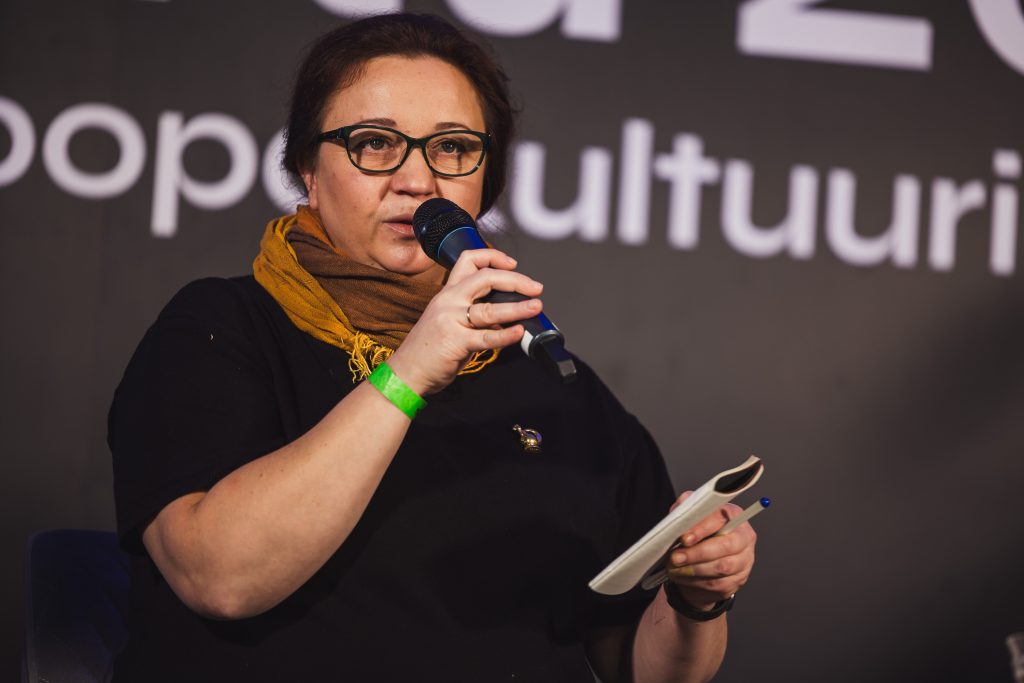
And even in these threatened conditions, the preservation of the collection, according to the speaker, is not about hiding it but showing it to the world while showing “a common background with the whole of Europe”; the Khanenko Museum has implemented and is planning several projects abroad.
According to Sirje Helme, Director General of the Estonian Art Museum Foundation, no one can be prepared for a challenge like war. However, Estonian experts are working out possible risks and have undergone training. In the meantime, Estonian museums are developing, modern, and digitalized, although they face particular financial challenges. Sirje Helme considers culture a security issue: the loss and neglect of culture leads to defeat in war.
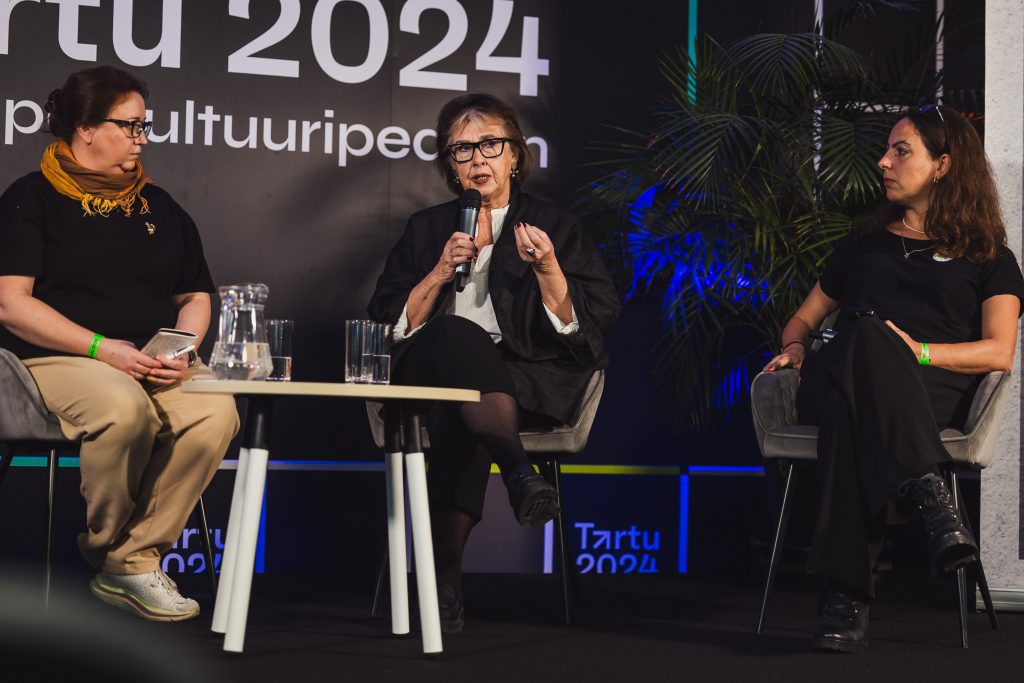
The perspective of Daphne Tolis, a film producer, director, and journalist documenting issues relevant to Greece in recent years, was somewhat different. They are related to the consequences of the financial and economic crisis of 2009, Grexit, the influx of refugees, and tourism (a source of income and negative impact on local communities and ancient monuments). The speaker sees a way out of limiting the number of tourists and the time spent visiting cultural sites. Significant and sometimes uncontrollable threats are associated with natural disasters like fires, floods, and heat. So, the discourse of contemporary Greece is how to protect local communities, heritage, traditions, settlements, landscapes, and ultimately Greek identity from natural and anthropogenic impacts.

Is it possible to talk about something other than survival in times of survival? The participants of the second discussion reflected on this. According to Oksana Dovgopolova, co-founder and curator of the Past / Future / Art memory culture platform, reality shows that you cannot survive without something beyond survival. She mentioned examples of creative activity at the beginning of full-scale aggression, which seemed impossible and surprised foreigners at the time (a children’s art studio in the Kharkiv subway in March 2022), the importance of cultural institutions during the war (as “magnets”), the changing language of contemporary art and its reaching wider audiences.

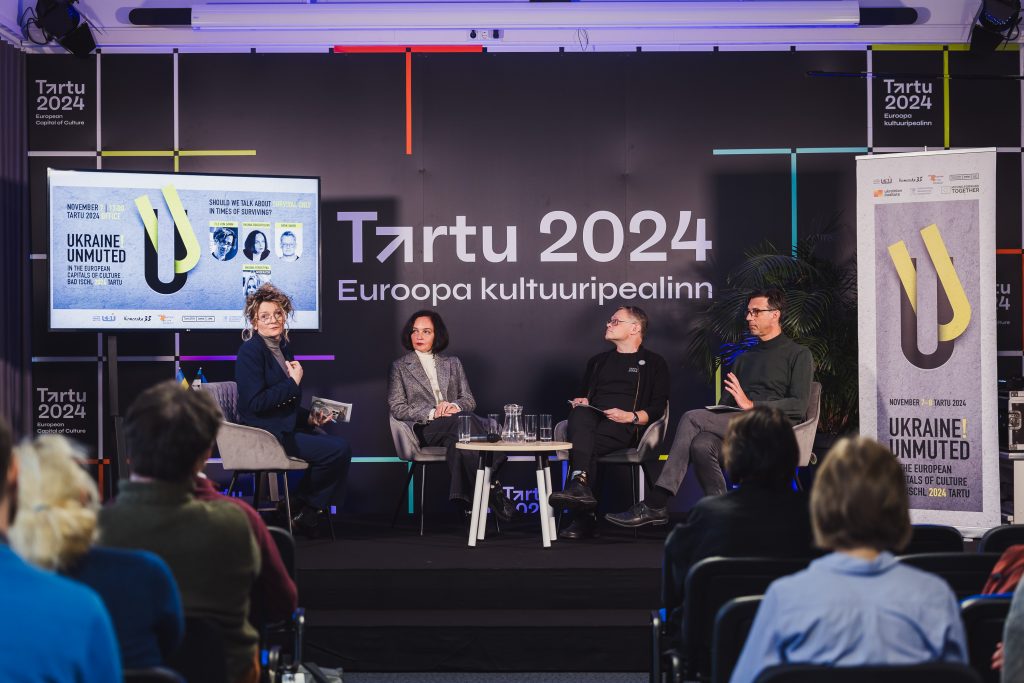
Burke Wager, Estonian writer and cultural manager, spoke about the Tartu 2024 ESC – Arts of Survival, where art is interpreted broadly as artistic expression, skills, craftsmanship, etc. Til von Damme, political scientist and head of the PerGlobal Institute, emphasized the connection between culture and democracy and its role in ensuring its future. They also discussed the manipulations of so-called democracies with culture, budget cuts in this area, etc.
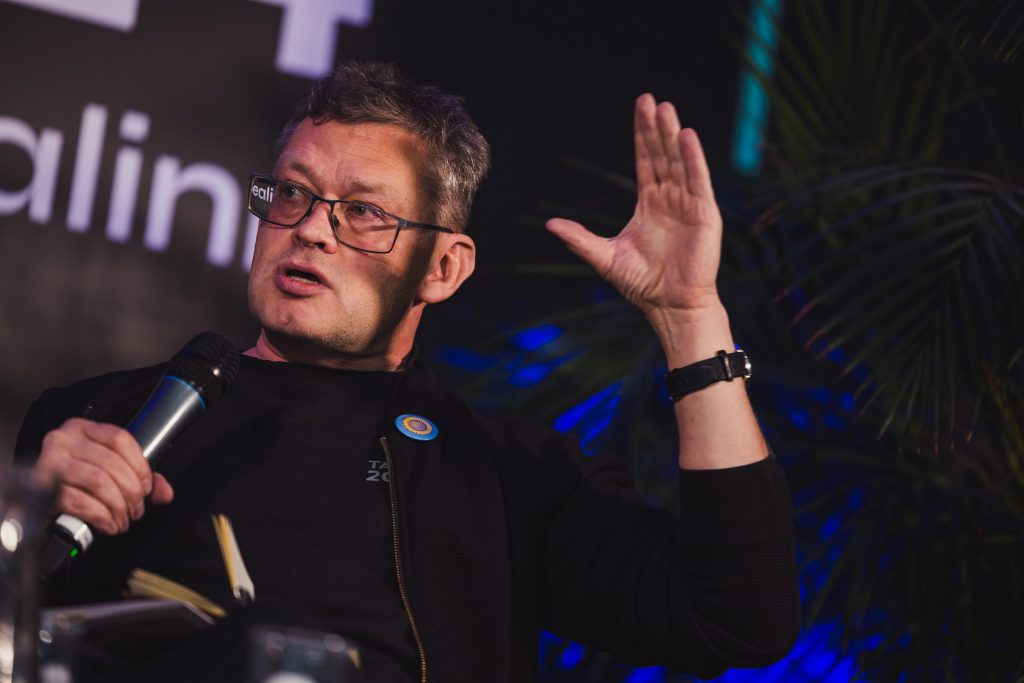
Another conversation was about what it means to be a “small culture in the post-imperial world.” According to moderator Oksana Forostyna, a small culture requires many footnotes when writing about it; the smaller the culture, the more footnotes. How can we equalize the starting positions of “big” and “small” cultures (small linguistic communities, small countries in terms of area or population)?
One of the attempts is to create a network of editors of European cultural publications called Eurozine for self-presentation and dissemination of iconic texts, as described by Carl Henrik Fredriksson, Swedish writer and editor, co-founder of Eurozine, program director of the Debate on Europe. The diversity and depth of “small” (like Estonian) and local cultures was emphasized by Michael Cole, a lecturer at the University of Tartu, a journalist originally from the UK but has lived in Ukraine and for the last six years in Tartu.
His idea is that not only “high culture” is vital for cultural exchange and development but also everyday practices (listening to the radio, collaborations), interpersonal relationships, popular formats (like Eurovision), and even the extra-cultural dimension. Personal contact with another culture lays the groundwork for further genuine interest, concern, and new interactions.

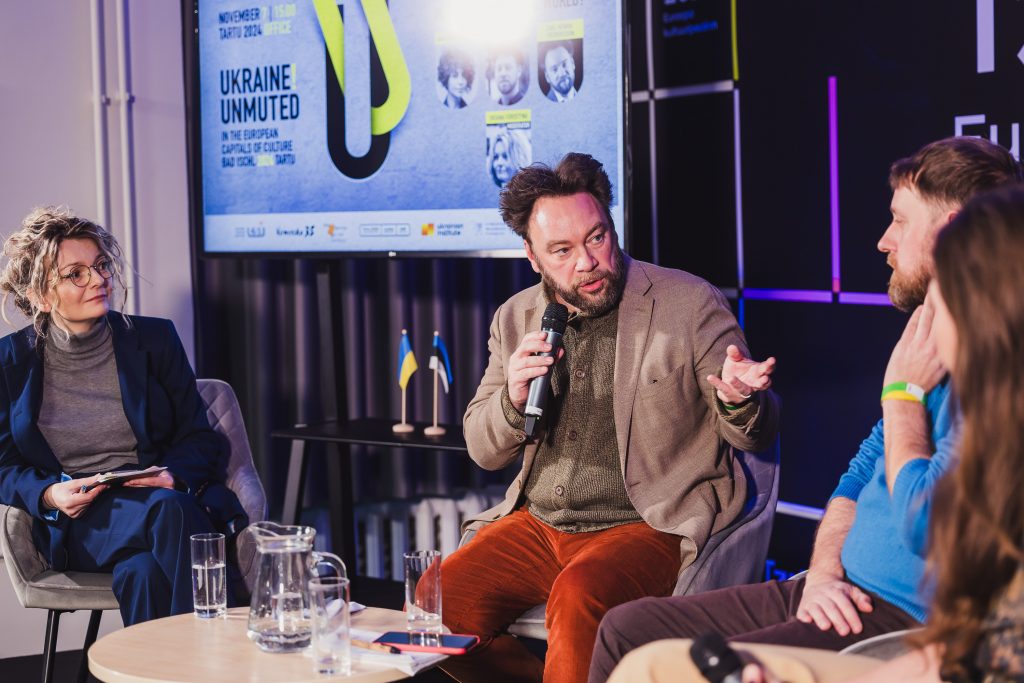
Anastasia Volkova, Head of the Art Programs Department at the Ukrainian Institute, said that because of Russia’s full-scale invasion, many people seem to have discovered Ukraine. The level of international support was and is significant. Still, its results are not always the best: sometimes the aesthetic quality is secondary (the main thing is to support Ukrainians), and some projects are too closed (Ukrainian artists abroad perform for local Ukrainians). It is also essential to expand the context of intercultural interaction: for example, the Ukrainian Institute has created units focusing on South America, Asia, and Indonesia.
Art program
The discussions were followed by art, an experimental dance performance called Labyrinth without Minotaur. The Ukrainian dancer and choreographer Maria Bakalo invited the audience to follow an imaginary route through movement and participation, full of stories and artifacts of real life during the war. These were movement fragments and interactive “stops”: the author shared photos from her family archive and stories of her relatives who were repressed during the Soviet period; one of them was about Maria’s grandfather, who survived the Holodomor of 1932-33 in the Dnipro region; she demonstrated the fragments of a Russian missile that destroyed a house on Stryiska Street in Lviv in July 2023 (10 people were killed), and the uniform of a Russian soldier. And those who wished to join in weaving the camouflage net, adding to the fragments previously added during Maria’s performances in the United States, where the performance was originally conceived and presented.



Also, in Tartu, the website of the Ukrainian Slice contemporary Ukrainian art project was presented. The resource contains information about five project editions since 2010: 4 European cities, almost 200 artworks and projects, and almost 140 authors and collectives. Lida-Savchenko Duda, head of the Ukrainian Slice project, told this. “The project is to some extent related to European cities that have had (such as Wroclaw and Kaunas) or will have (Lublin) the status of European Capital of Culture. In fact, for Lviv, Ziz was, to some extent, a path to the ECC because, as Yulia Khomchyn, the project manager of UKRAINE! UNMUTED project manager in Tartu, Lviv, has applied for the 2030 ENC competition.



Another meeting was dedicated to the book of essays “UKRAINE! UNMUTED, which is now available in English and Estonian. One of the authors of the collection, Yurko Vovkohon, a cultural project manager and veteran, noted that he would now add “many words about exhaustion” to his text, written in 2022 (during rehabilitation in Riga after a serious injury), the psychological state of Ukrainians, and the loss of people in the war. New to the Estonian edition of the collection is the text “Deep Trauma and Intellectual Laziness” by Olena Apchel, a theater director and researcher currently serving in the Ukrainian Defense Forces. It was written for a German publication, later published in Ukrainian in the Left Bank, and went viral.
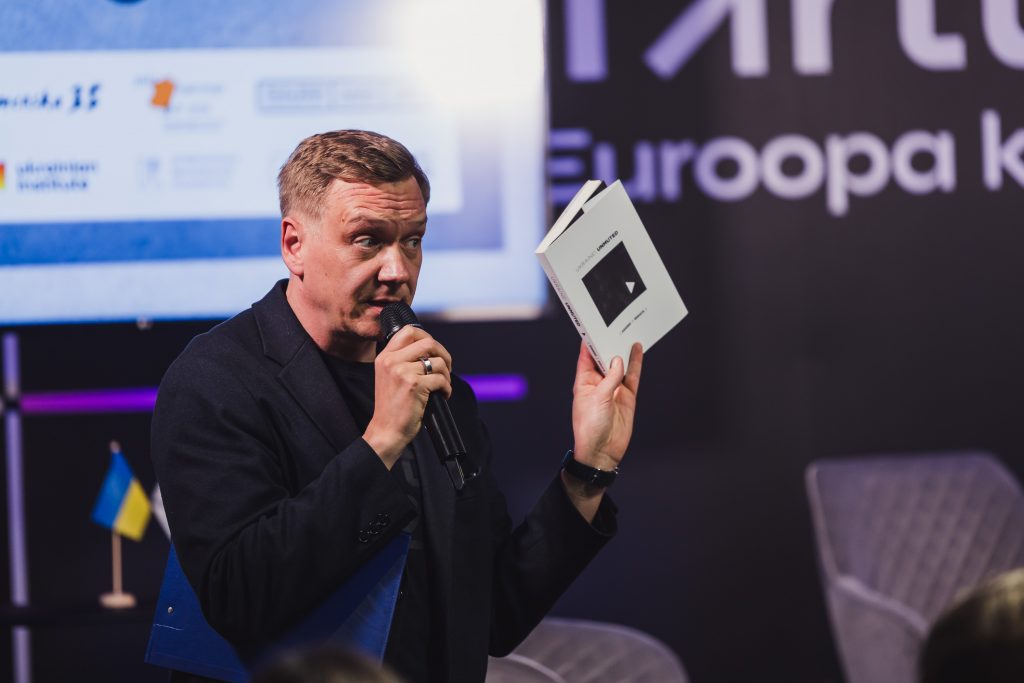
Drawing on her own experience, the author argues that many European intellectuals are satisfied with their established vision of the world, and any other narratives (such as the Ukrainian one about the war of 2014 as Ukraine’s struggle for the identity and subjectivity of a once-colonized people) create discomfort and are met with rejection. Olena defends “the right to emotion and pain,” opposes “the rational world that offers to numb trauma,” and explains that “this chauvinistic war gives us back the right to empathy.” Olena’s text was translated into Estonian by Ilona Martson. Other essays in UKRAINE! UNMUTED is available in Estonian, thanks to Anna Vershik and Margus Lattik, who also joined the event and spoke about their work on the translation. Oksana Forostyna edited and compiled the book.
UKRAINE! UNMUTED was implemented as part of the Tartu ESC and Bad Ischl/Salzkammergut 2024 programs. This project of the Institute for Cultural Strategy and the NGO “Armenian 35” was supported by the European Union and the International Renaissance Foundation within the framework of the joint initiative “European Renaissance of Ukraine” and with the support of the Ukrainian Institute. Media partners: UkraineWorld, Delfi.
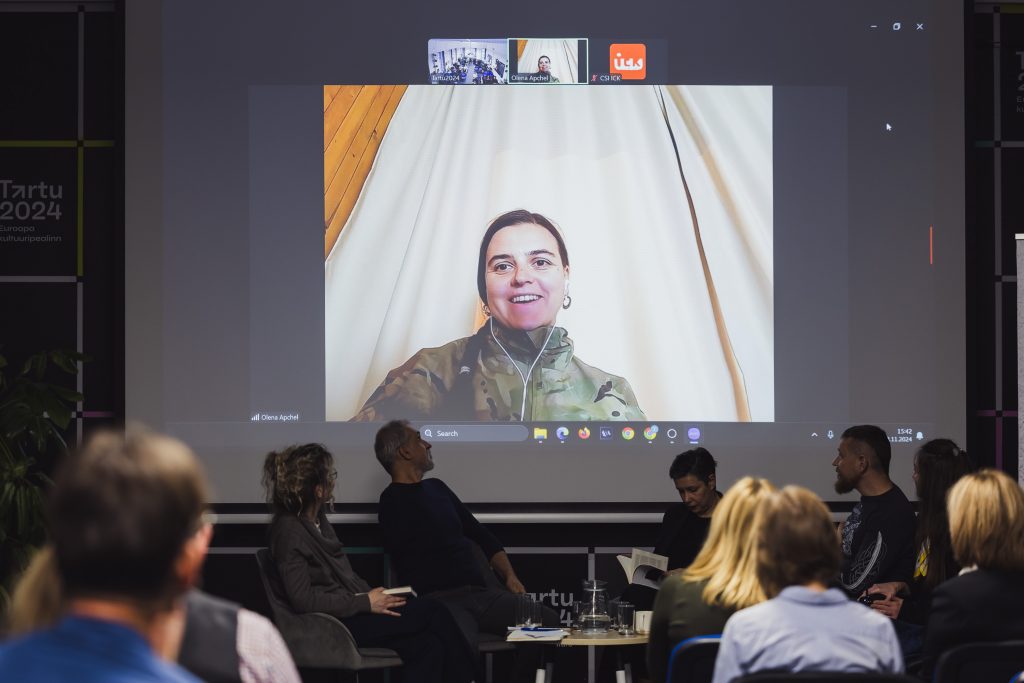
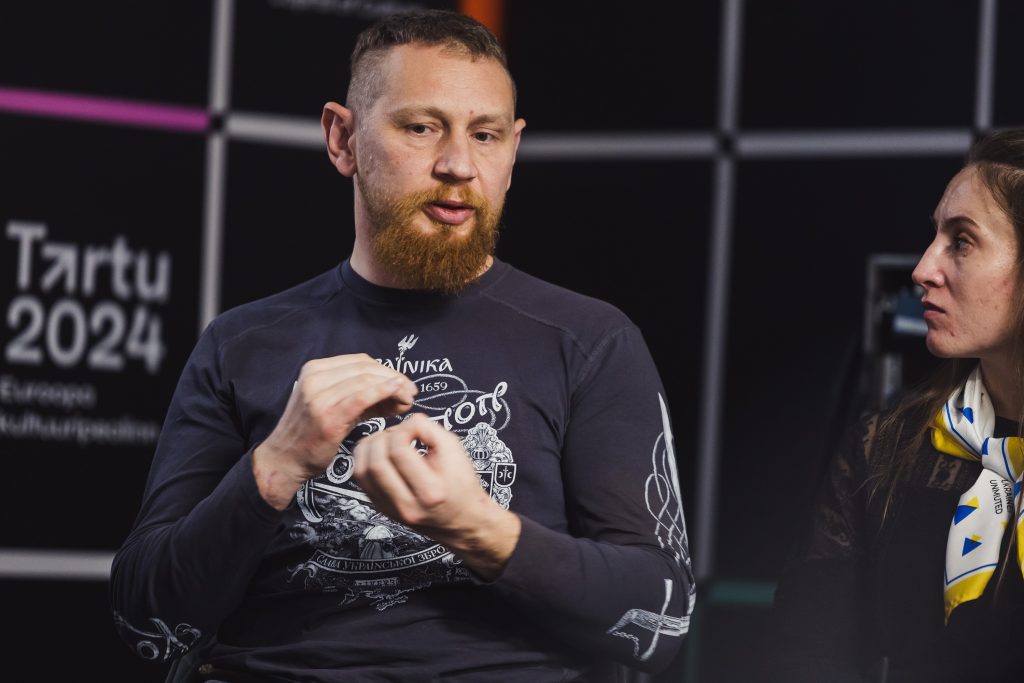
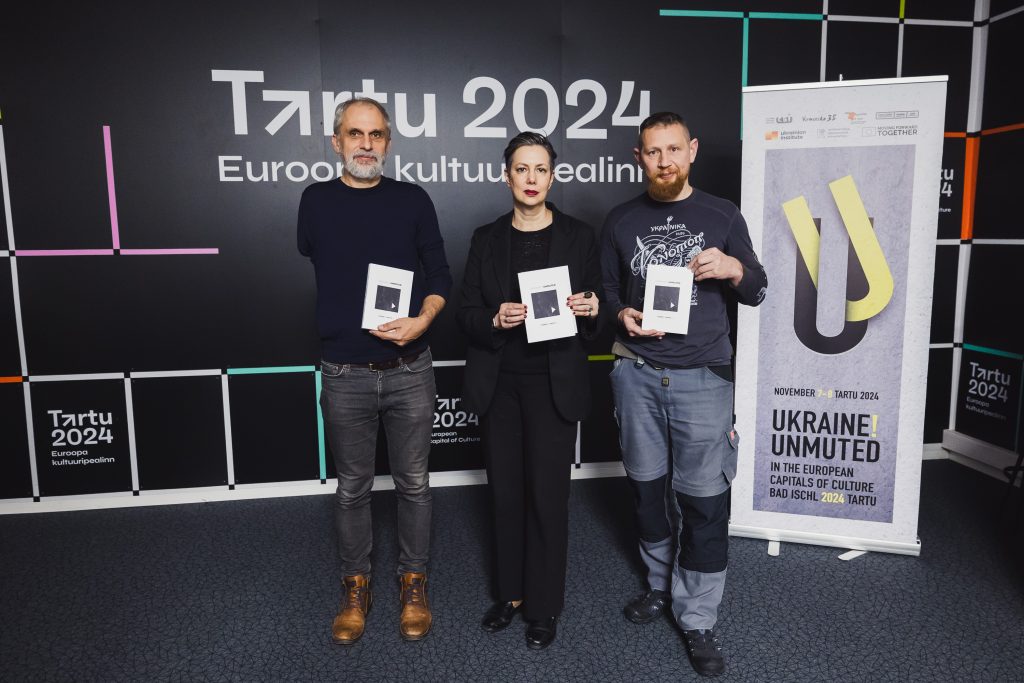
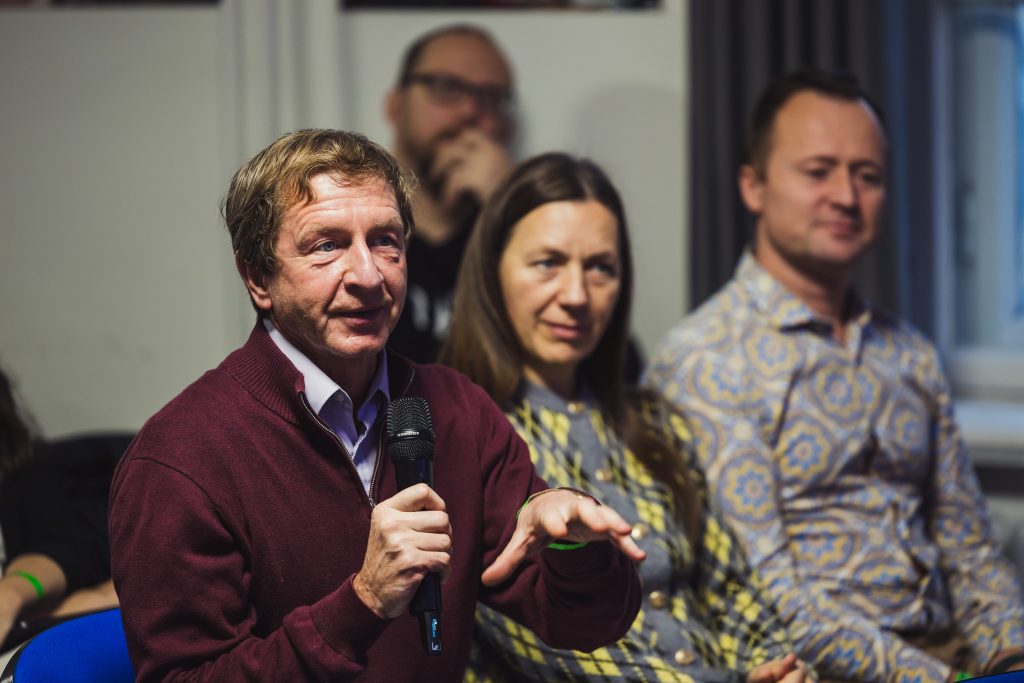
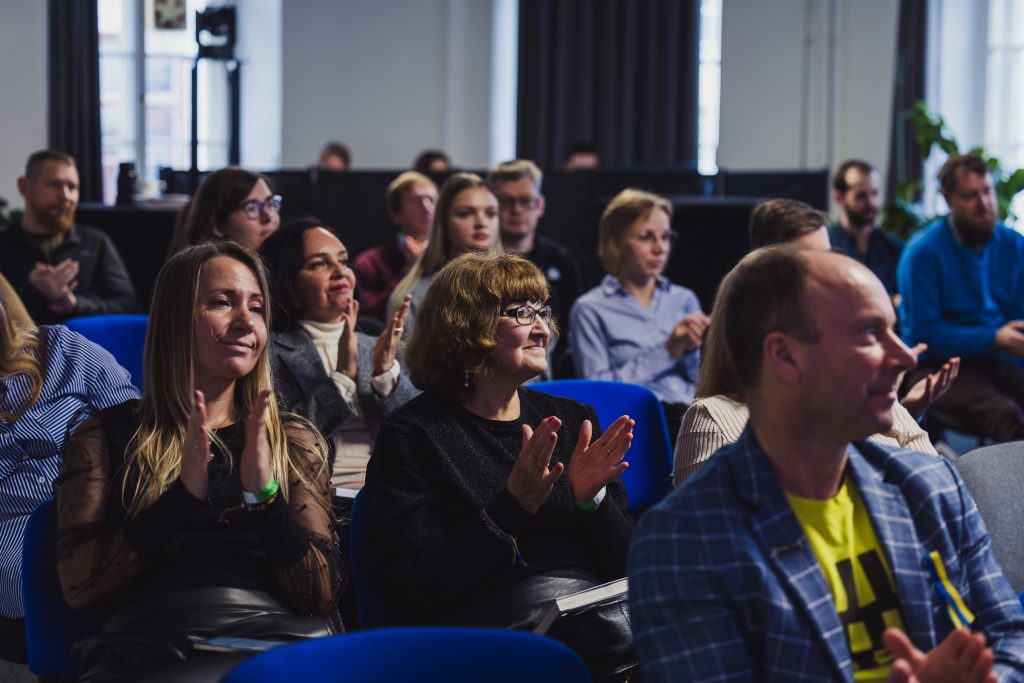
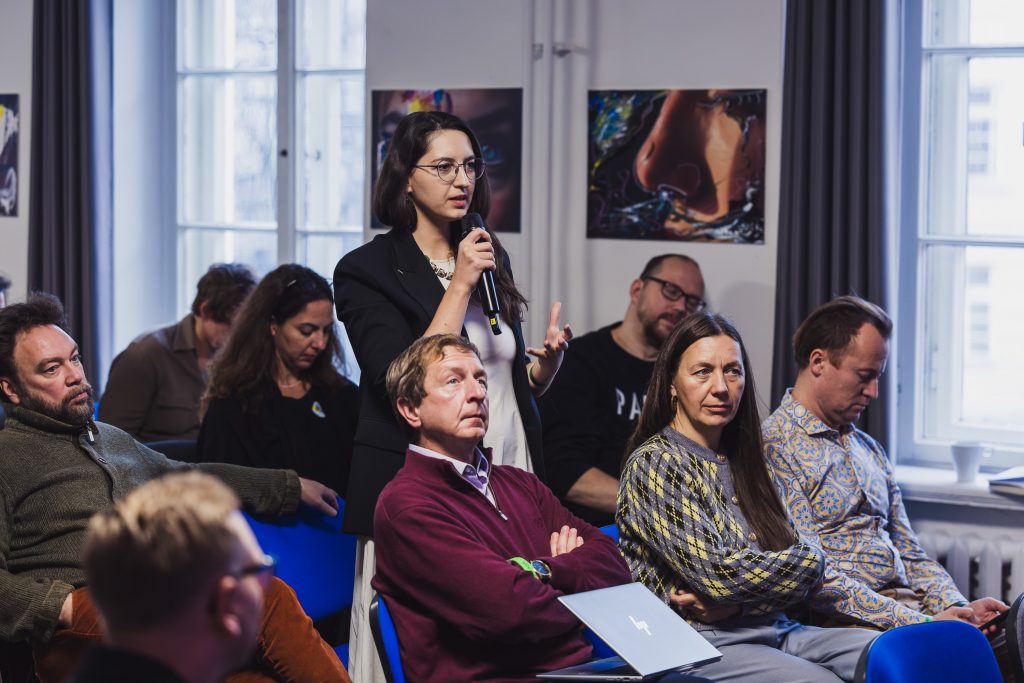
Photos: Silver Gutmann / Tartu 2024.


